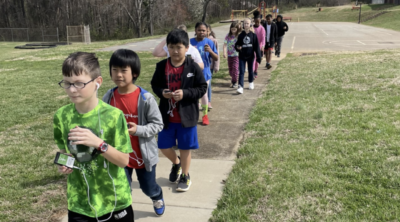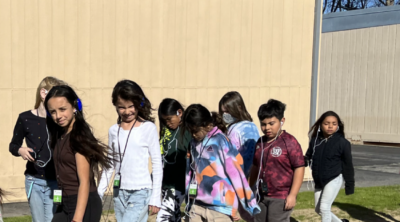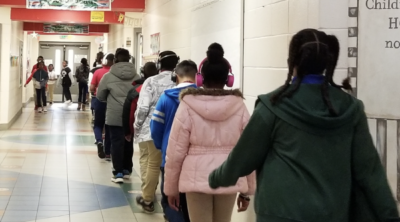It’s April and that means it’s Global Astronomy Month, an event organized by Astronomers without Borders since 2010. In recognition of this celestial celebration, why not make a moment to meet an astronomer, and learn about what it is involved in studying the sky? Then, check out these resources and get fully engaged in space study!
In one of The Walking Classroom’s Science Career Series podcasts, you can hear from Dr. Patrick Treuthardt, Assistant Head of the Astronomy and Astrophysics Research Lab at the North Carolina Museum of Natural Sciences. The podcast is easily accessible, either via our website or on WalkKits (4-#104, 5-#110, STEM-#46).
With a bachelor’s degree in physics with an option in astrophysics, and a master’s degree and Ph.D. in physics with astronomy, Dr. Treuthardt is an expert in celestial studies, that’s for sure! His main area of interest is the formation and structure of different galaxies, and he uses both data and modeling to help him.
Paving a Path to Studying the Sky
In the podcast, Dr. Treuthardt discusses his background and explains how his interest in astronomy developed.
 As a youngster, he found science fascinating and enjoyed reading science fiction, comic books, and anything science-related. In fact, it was a family subscription to Discover that piqued his interest in several scientific fields, including paleontology, entomology, and astronomy!
As a youngster, he found science fascinating and enjoyed reading science fiction, comic books, and anything science-related. In fact, it was a family subscription to Discover that piqued his interest in several scientific fields, including paleontology, entomology, and astronomy!
Once he was in high school, he studied chemistry and physics. He loved the math in both, but especially in physics where math was used to describe things. Eventually he pursued astronomy, which he describes as “physics in space”!
Get Some Hands-On Help and Mix in Some Math!
As Dr. Treuthardt mentions in his podcast, astronomy is a science where there is no hands-on experience. Because we can’t just go out there and touch what it is that we are studying then, how can you bring it down to earth (pun intended) for your students? Fairly simply it turns out.
Your class can experience space just as Dr. Treuthardt does — by using data and models! Have your students experience black holes or build a galaxy of their own! Mix in some math as your class crafts a scale model of the solar system. As the planets’ diameters and their distance from one another involve some rather large numbers, it might be a good time to introduce some scientific notation!
Connect with Texts
Go beyond the basics by bringing in some books about space to enhance your study. There are plenty of texts, from picture books to poetry collections to support you in your efforts!
Pairing with Other Podcasts
 There are a number of other podcasts perfect for your budding astronomers as well. From information on the features of space to biographies of those studying the skies or soaring through them, The Walking Classroom has got you covered!
There are a number of other podcasts perfect for your budding astronomers as well. From information on the features of space to biographies of those studying the skies or soaring through them, The Walking Classroom has got you covered!
- Sun, Stars, and Galaxies (4-#78, STEM-#26, Complete-#144)
- Galileo Galilei (5-#24, STEM-#5, Complete-#165)
- Benjamin Banneker (5-#28, STEM-#7, Complete-#153)
- Neil Armstrong (5-#82, Complete-#152)
Resources for Lesson Plans, Activities, and More!
And there’s far more out there (here on earth!) to help guide you in your celestial studies. You don’t have to look far to find resources from the National Aeronautics and Space Administration (NASA) and lesson plans from other teachers! You can even visit a virtual planetarium or check out some other online options.






Leave a Reply